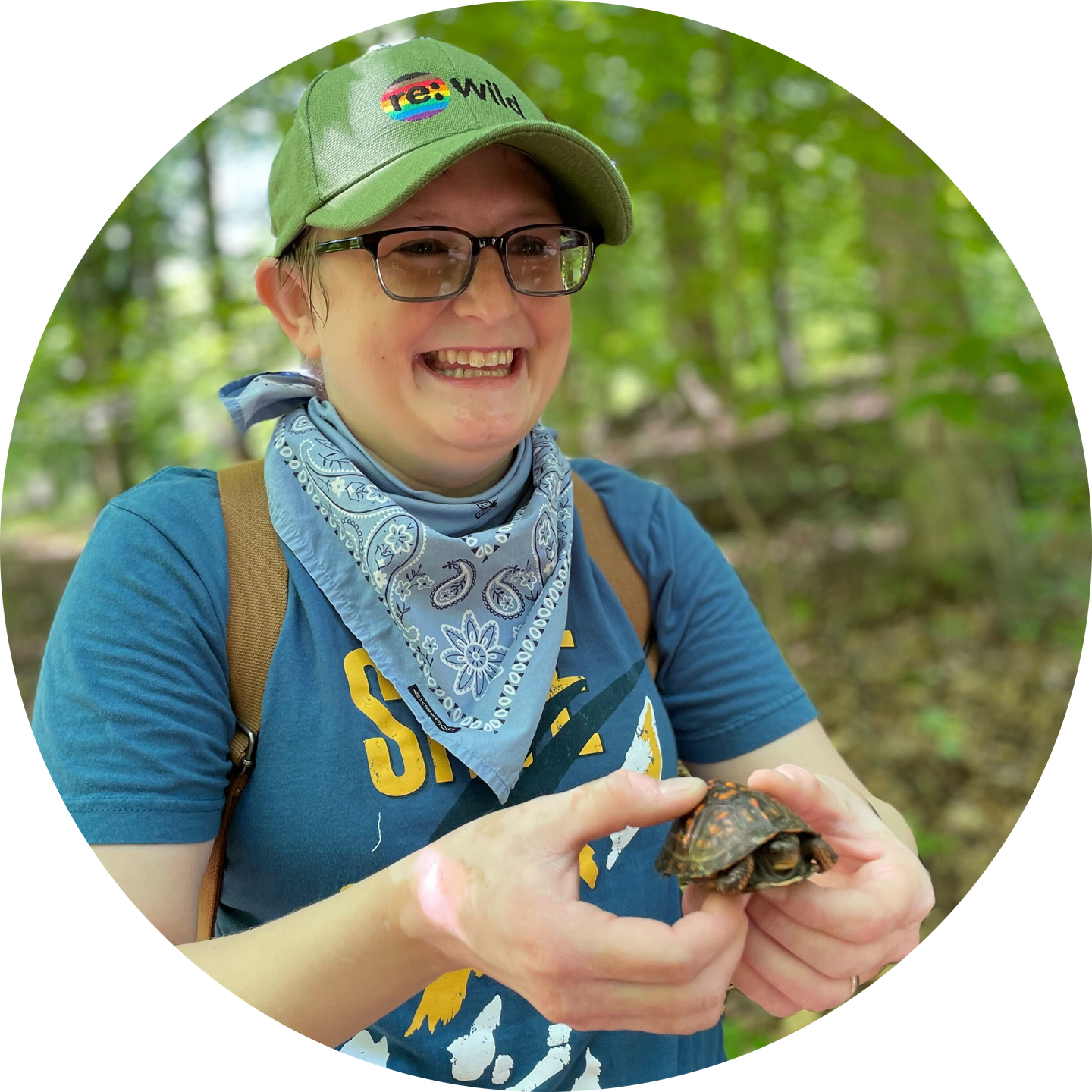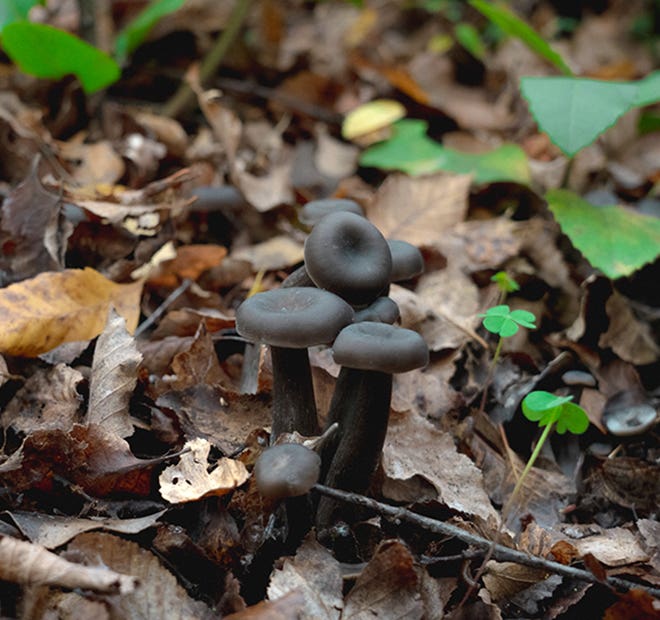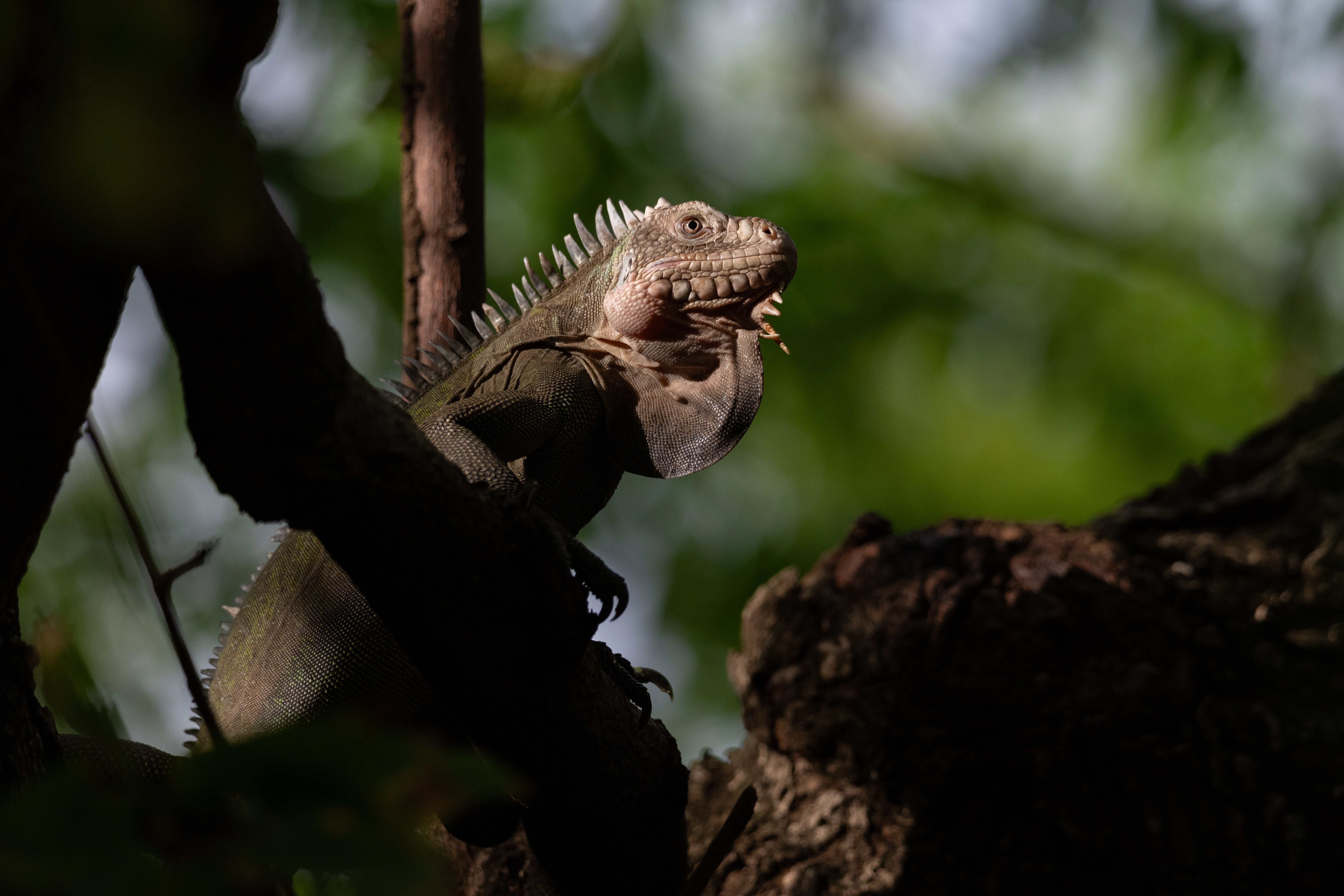The big puma fungus (Austroomphaliaster nahuelbutensis), an enigmatic species of fungi that lives underground in Chile’s Nahuelbuta Mountains had only ever been found in the wild once in the 1980s, until it was recently rediscovered by an expedition team with the Fungi Foundation and Fundación Nahuelbuta. The fungus was one of the world’s most wanted lost species by Re:wild’s Search for Lost Species.
It’s the first time the Search for Lost Species, a global search for species of plants, animals and fungi that have not had a documented sighting in at least 10 years, has rediscovered a species of fungi.
"We knew it was going to be hard to find the big puma fungus and that the chances of finding the mushrooms were low, considering their colors and how they blend with the fallen leaves,” said Daniela Torres, programs lead at the Fungi Foundation and leader of the expedition. “It was truly a unique moment when we managed to be in the right place at the right time to see the mushrooms. It was a big collaborative effort to make that happen, but these types of expeditions are essential to conservation efforts because an increasing number of species are threatened. Understanding the biodiversity that exists and interacts within a specific area helps us comprehend its behavior and its potential to adapt to ongoing changes and underlying threats."
The expedition team set out for the temperate forests of the Nahuelbuta Mountains in May 2023 to retrace the footsteps of Chilean mycologist Norberto Garrido, who discovered the big puma fungus and described it to Western science in 1988.
They timed the expedition to coincide with the exact dates in May that Garrido had hiked the mountains more than 40 years earlier.
“It’s possible that the reproductive parts of the big puma fungus—the mushroom—are only fleetingly visible above the soil on the same few days each year, which made the timing of the expedition a crucial factor,” said Claudia Bustamante, a mycologist and member of the expedition team.
As they searched the forest floor in the Nahuelbuta Mountains, the expedition team compared mushrooms they found to illustrations and descriptions Garrido had made of the big puma fungus’ mushrooms. They were looking for small grayish-brown mushrooms with hints of red and stems that were thicker at the base than near the mushroom cap. Those were the main characteristics Garrido described in his notes, alongside a microscopical analysis of the mushroom’s spores.
On the first day of their expedition in 2023, the team found a tiny mushroom that matched several of the characteristics of the big puma fungus, but it was too small to positively identify in the field. The team spent nearly six more days looking for a similar mushroom, but didn’t find any.
On the last day of the expedition, the Fungi Foundation led a workshop and a community hike to look for fungi in a nearby forest. During that hike, two of the local participants found a group of about four mushrooms that all matched the description of the big puma fungus.
The expedition team carefully collected the mushrooms, leaving the mycelium in the ground, and took the mushrooms to the Fungi Foundation’s fungarium (FFCL). Although the mushrooms matched the physical and microscopical description of the big puma fungus, a DNA analysis confirmed that the team had found the correct species.
The expedition team compared the DNA from the mushroom collected in May 2023 to the DNA of the original mushroom Garrido collected during the 1980s. The analysis took several months, but ultimately showed that the two were the same species.
“The story behind this rediscovery encapsulated all of the aspects that can help ensure a successful outcome,” said Christina Biggs, program officer for Re:wild’s Search for Lost Species. “These discoveries are often collaborative efforts between scientists and local communities, and since scientists think it’s likely only 10% of species in the fungi kingdom have been described, these kinds of partnerships are increasingly important since plants, animals and fungi are all facing threats.”
The Fungi Foundation released a short film by Chilean filmmaker Catalina Infante that captured the wonder of the expedition, as well as the moment when the team found the big puma fungus with the local community. The film is available on the Fungi Foundation’s website and YouTube channel.
Since 2017, the Search for Lost Species has rediscovered 13 of the world’s most wanted lost species. In addition to the big puma fungus, Re:wild, working with partners across the world, has confirmed the rediscovery of Jackson’s climbing salamander in Guatemala, both Wallace’s giant bee and the velvet pitcher plant in Indonesia, the silver-backed chevrotain in Vietnam, the Somali sengi in Djibouti, the Voeltzkow’s chameleon in Madagascar, Fernandina giant tortoise in the Galápagos, Sierra Leone crab in Sierra Leone, the Pernambuco holly tree in Brazil, Attenborough's echidna in Indonesia, De Winton’s golden mole in South Africa and Fagilde’s trapdoor spider in Portugal.
Re:wild’s Search for Lost Species is supported by Colossal Biosciences.
###
Photo: The mushrooms of the big puma fungus. It is the first fungi species lost to science to be rediscovered by the Search for Lost Species. (Photo by Catalina Infante)
Re:wild Re:wild protects and restores the wild. We have a singular and powerful focus: the wild as the most effective solution to the interconnected climate, biodiversity and human wellbeing crises. Founded by a group of renowned conservation scientists together with Leonardo DiCaprio, Re:wild is a force multiplier that brings together Indigenous peoples, local communities, influential leaders, nongovernmental organizations, governments, companies and the public to protect and rewild at the scale and speed we need. Learn more at rewild.org.
Fungi Foundation The Fungi Foundation is a global organization that works for the fungi, their habitats, and the people who depend on them. Launched in 2012, it was the first NGO working to conserve the world’s funga. Since its inception, it has been dedicated to exploring the fungi world in view of increasing knowledge of their diversity, educating about their applications, and recommending public policy for their conservation. Find more at www.ffungi.org

Devin Murphy
Writer
Devin Murphy is Re:wilds’s senior communications specialist and helps Re:wild and its partners tell stories about the work they do to protect wildlife and wildlands around the planet. Her favorite stories about conservation include fascinating and little-known species and the dedicated humans protecting them.




